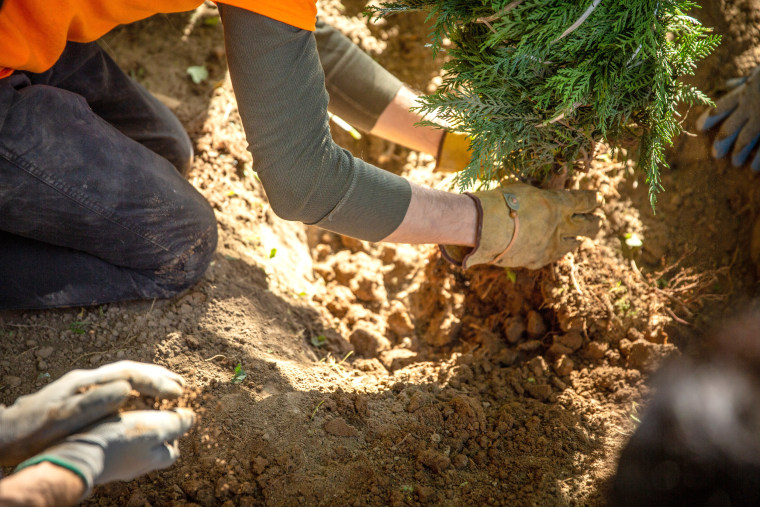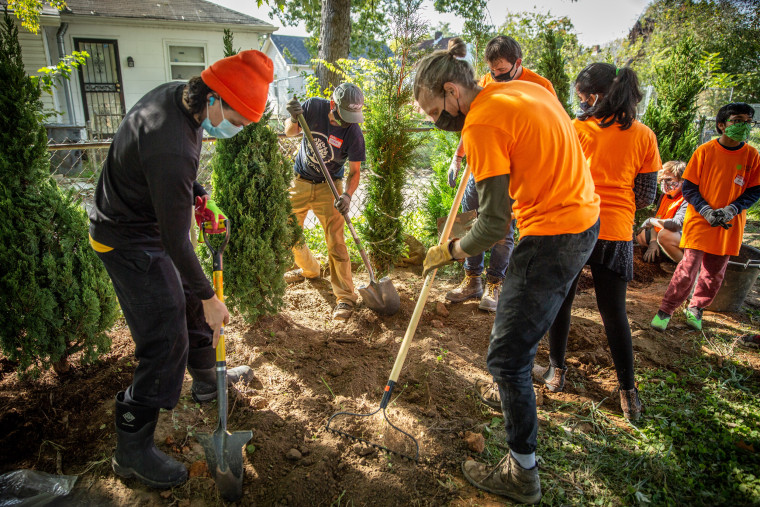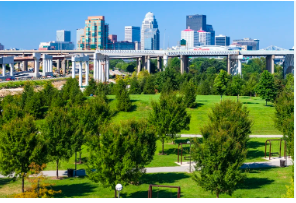According to recent studies, having plenty of trees around your home may be just as good for your heart as exercising frequently.
A clinical experiment led by University of Louisville researchers tracked hundreds of residents in six South Louisville, Kentucky, low- to middle-class communities. To learn more about how their heart risks altered before and after the team planted hundreds of mature trees close to their houses, they collected blood and other sample materials.

In comparison to those who lived in more tree-bare neighborhoods, residents of neighborhoods with twice as many trees and shrubs had lower levels of a blood marker linked to heart disease, diabetes, and certain types of cancer, according to results from the Green Heart Louisville Project’s HEAL Study, which were released on Tuesday.
Lead project physician Aruni Bhatnagar of the University of Louisville stated, “We are trying to see if we can decrease the rates of heart disease in a community.”
The majority of earlier research on the positive impacts of environment on mental and physical health is observational in nature, making it impossible to determine if the higher health care and affluence of residents in green towns contributes to their overall wellbeing.
A control group and an intervention, or something quantifiable that some participants were exposed to during the trial but not previously, were included in the design of the HEAL study.
About 750 residents in a 4-mile radius in South Louisville that was divided by a roadway were enlisted by Bhatnagar and his group. The age range of the inhabitants was 25 to 75.
Of these, almost 80% identified as white, and 60% as female. Fifty per cent said their typical household income was $50,000.
Before starting their intervention, the researchers took samples of each subject’s blood, urine, hair, and nails in addition to their medical history.
Then, they planted 45 different kinds of shrubs, 630 deciduous trees (the kind that shed their leaves in the fall), and approximately 8,500 evergreen trees in some areas of the 4-mile research area between 2019 and 2022 while leaving other areas unplanted.
Both the previous year and this year, fresh samples were collected from locals residing in both locations.
The blood marker high-sensitivity C-reactive protein, which is linked to heart disease such as stroke, coronary artery disease, and heart attack, was 13% lower in residents of the intervention regions. According to Bhatnagar, the decline was comparable to beginning a regular workout regimen.
Although he was not involved in the new research, Peter James, director of the Center for Occupational and Environmental Health at the University of California, Davis School of Medicine, said, “I wouldn’t have expected such a strong biomarker response, and that speaks to maybe something truly is causal here with how trees impact health.”

How physical health may be enhanced by plants
Prior studies have demonstrated the positive effects of green environments on mental well-being.
A recent study demonstrated the link between physical health and residing near more trees.
Low-income and communities of color are disproportionately affected by the urban heat effect, which is mitigated by trees since they cool and offer shade in their planted areas. In addition to aggravating cardiac disease, hot weather can also lead to heatstroke in healthy individuals.
According to James, trees help reduce noise, which has been connected to an increased risk of cardiovascular disease.
In an email, Joan Casey, an environmental epidemiologist and assistant professor of environmental and occupational health sciences at the University of Washington, said, “They provide areas for people to relax, exercise, and probably more importantly, socialize.”
She said, “They also replace other land uses that are harmful to health, like industrial sites.”
The ability of trees to filter air pollution and shield neighborhoods from breathing in harmful particles may be the main reason why the tree-planting intervention appeared to lower inflammation markers in people living in green areas, according to Bhatnagar and his team. This is because one of the city’s major highways passes through the study area.
The initiative exclusively planted trees in the areas of South Louisville with the worst air quality during the research. Prior to the project, air quality measurements were collected, and the impact of the increased tree cover on pollution is currently being examined. It’s a complicated task since air quality varies with the weather. For example, depending on the direction of the wind, a windy day may produce an increase or reduction in air pollution in some regions, and on hotter days, air pollution is greater.
If the intervention neighborhoods continue to yield beneficial effects, the initiative intends to plant trees in the communities of the control group in another three or four years. It also seeks to ascertain if play outside strengthens children’s immune systems or their sleep quality when there is tree cover.
“Ultimate proof does not exist,” Bhatnagar stated. “However, this represents the most compelling evidence of any research ever conducted on the connection between trees and health.”
There is increasing evidence that it is critical to make sure green areas are dispersed fairly throughout cities, since this is not the situation at the moment.
Casey stated that when city planners create more equitable access to green spaces in cities, they must exercise caution to avoid creating “green gentrification”—that is, when spaces like water fronts are restored and housing prices rise as a result, making it unaffordable for current residents to remain there once a green space is completed.
The lesson to be learned from this is that green areas are not a privilege enjoyed by the rich, nor is nature an amenity. They are vital to our existence as humans,” James remarked.






